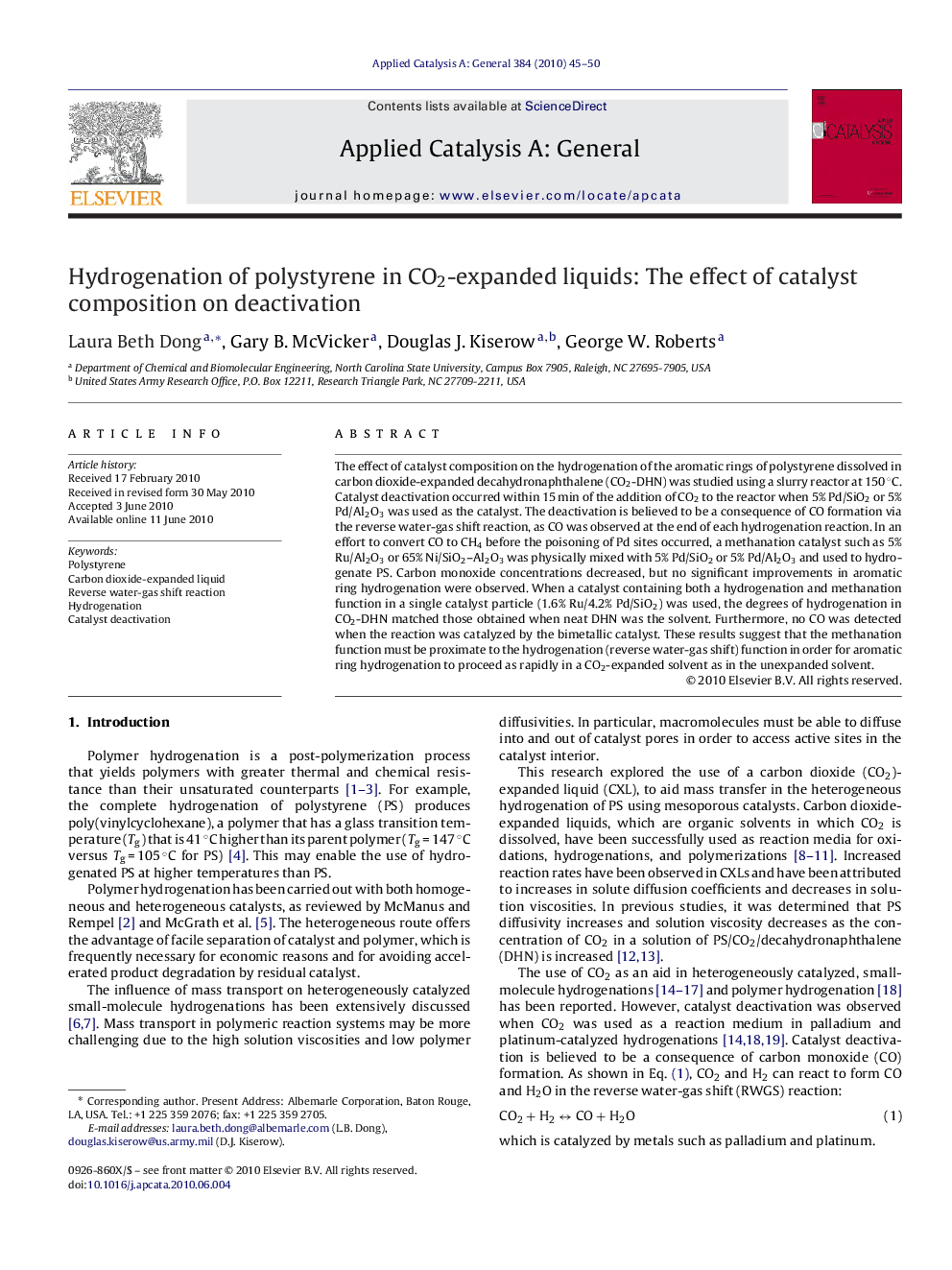| کد مقاله | کد نشریه | سال انتشار | مقاله انگلیسی | نسخه تمام متن |
|---|---|---|---|---|
| 41933 | 45905 | 2010 | 6 صفحه PDF | دانلود رایگان |

The effect of catalyst composition on the hydrogenation of the aromatic rings of polystyrene dissolved in carbon dioxide-expanded decahydronaphthalene (CO2-DHN) was studied using a slurry reactor at 150 °C. Catalyst deactivation occurred within 15 min of the addition of CO2 to the reactor when 5% Pd/SiO2 or 5% Pd/Al2O3 was used as the catalyst. The deactivation is believed to be a consequence of CO formation via the reverse water-gas shift reaction, as CO was observed at the end of each hydrogenation reaction. In an effort to convert CO to CH4 before the poisoning of Pd sites occurred, a methanation catalyst such as 5% Ru/Al2O3 or 65% Ni/SiO2–Al2O3 was physically mixed with 5% Pd/SiO2 or 5% Pd/Al2O3 and used to hydrogenate PS. Carbon monoxide concentrations decreased, but no significant improvements in aromatic ring hydrogenation were observed. When a catalyst containing both a hydrogenation and methanation function in a single catalyst particle (1.6% Ru/4.2% Pd/SiO2) was used, the degrees of hydrogenation in CO2-DHN matched those obtained when neat DHN was the solvent. Furthermore, no CO was detected when the reaction was catalyzed by the bimetallic catalyst. These results suggest that the methanation function must be proximate to the hydrogenation (reverse water-gas shift) function in order for aromatic ring hydrogenation to proceed as rapidly in a CO2-expanded solvent as in the unexpanded solvent.
Figure optionsDownload high-quality image (58 K)Download as PowerPoint slideResearch highlights▶ Pd catalyst deactivation occurs when PS is hydrogenated in CO2-expanded solvents. ▶ Reverse water-gas shift reaction forms CO, which poisons Pd hydrogenation sites. ▶ Ni and Ru catalysts can be used to reduce CO levels. ▶ Mixtures of mesoporous Pd & Ru or Ni catalysts are ineffective in hydrogenation. ▶ Bimetallic catalyst (Pd/Ru or Ni on same particle) is effective in PS hydrogenation.
Journal: Applied Catalysis A: General - Volume 384, Issues 1–2, 20 August 2010, Pages 45–50